- Clone
- 63D3 (See other available formats)
- Regulatory Status
- RUO
- Other Names
- Monocyte differentiation antigen CD14, myeloid cell-specific leucine-rich glycoprotein, LPS receptor
- Isotype
- Mouse IgG1, κ
- Barcode Sequence
- CAATCAGACCTATGA
| Cat # | Size | Price | Quantity Check Availability | ||
|---|---|---|---|---|---|
| 367131 | 10 µg | $369.00 | |||
CD14 is a 53-55 kD glycosylphosphatidylinositol (GPI)-linked membrane glycoprotein that is also known as the LPS receptor. CD14 is expressed at high levels on monocytes and macrophages, and at lower levels on granulocytes. Some dendritic cell populations such as interfollicular dendritic cells, reticular dendritic cells, and Langerhans cells have also been reported to express CD14. As a high-affinity receptor for LPS, CD14 is involved in the clearance of gram-negative pathogens and in the upregulation of adhesion molecules and cytokine expression in monocytes and neutrophils.
Product Details
- Verified Reactivity
- Human
- Antibody Type
- Monoclonal
- Host Species
- Mouse
- Immunogen
- Purified human peripheral blood monocytes.
- Formulation
- Phosphate-buffered solution, pH 7.2, containing 0.09% sodium azide and EDTA
- Preparation
- The antibody was purified by chromatography and conjugated with TotalSeq™-A oligomer under optimal conditions.
- Concentration
- 0.5 mg/ml
- Storage & Handling
- The antibody solution should be stored undiluted between 2°C and 8°C. Do not freeze.
- Application
-
PG - Quality tested
- Recommended Usage
-
Each lot of this antibody is quality control tested by immunofluorescent staining with flow cytometric analysis and the oligomer sequence is confirmed by sequencing. TotalSeq™-A antibodies are compatible with 10x Genomics Single Cell Gene Expression Solutions.
To maximize performance, it is strongly recommended that the reagent be titrated for each application, and that you centrifuge the antibody dilution before adding to the cells at 14,000xg at 2 - 8°C for 10 minutes. Carefully pipette out the liquid avoiding the bottom of the tube and add to the cell suspension. For Proteogenomics analysis, the suggested starting amount of this reagent for titration is ≤ 1.0 µg per million cells in 100 µL volume. Refer to the corresponding TotalSeq™ protocol for specific staining instructions.
Buyer is solely responsible for determining whether Buyer has all intellectual property rights that are necessary for Buyer's intended uses of the BioLegend TotalSeq™ products. For example, for any technology platform Buyer uses with TotalSeq™, it is Buyer's sole responsibility to determine whether it has all necessary third party intellectual property rights to use that platform and TotalSeq™ with that platform. - Additional Product Notes
-
TotalSeq™ reagents are designed to profile protein levels at a single cell level following an optimized protocol similar to the CITE-seq workflow. A compatible single cell device (e.g. 10x Genomics Chromium System and Reagents) and sequencer (e.g. Illumina analyzers) are required. Please contact technical support for more information, or visit biolegend.com/totalseq.
The barcode flanking sequences are CCTTGGCACCCGAGAATTCCA (PCR handle), and BAAAAAAAAAAAAAAAAAAAAAAAAAAAAAA*A*A (capture sequence). B represents either C, G, or T, and * indicates a phosphorothioated bond, to prevent nuclease degradation.
View more applications data for this product in our Scientific Poster Library. -
Application References
(PubMed link indicates BioLegend citation) -
- Fridlender ZG, et al. 1999. Hum. Immunol. 11:1028.
- Devitt A, et al. 1998. Nature 6675:505.
- Product Citations
-
- RRID
-
AB_2734412 (BioLegend Cat. No. 367131)
Antigen Details
- Structure
- GPI-linked membrane glycoprotein.
- Distribution
-
Monocytes, macrophages, dendritic cells, and granulocytes.
- Function
- LPS receptor, clearance of Gram-negative pathogens.
- Interaction
- LPS.
- Ligand/Receptor
- LPS.
- Cell Type
- Dendritic cells, Granulocytes, Macrophages, Monocytes, Neutrophils
- Biology Area
- Cell Biology, Immunology, Neuroinflammation, Neuroscience
- Molecular Family
- Adhesion Molecules, CD Molecules
- Antigen References
-
- Stocks SC, et al. 1990. Biochem. J. 268:275.
- Wright SD, et al. 1990. Science 4975:1431.
- Gene ID
- 929 View all products for this Gene ID
- UniProt
- View information about CD14 on UniProt.org
Other Formats
View All CD14 Reagents Request Custom ConjugationCompare Data Across All Formats
This data display is provided for general comparisons between formats.
Your actual data may vary due to variations in samples, target cells, instruments and their settings, staining conditions, and other factors.
If you need assistance with selecting the best format contact our expert technical support team.
-
Purified anti-human CD14
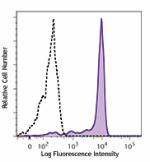
Human peripheral blood monocytes were stained with CD14 (clo... -
PE anti-human CD14
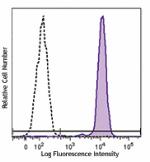
Human peripheral blood monocytes were stained with CD14 (clo... -
Biotin anti-human CD14

Human peripheral blood monocytes were stained with biotinyla... -
APC/Cyanine7 anti-human CD14
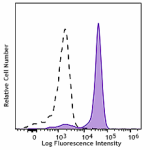
Human peripheral blood monocytes stained with CD14 (clone 63... -
PE/Cyanine7 anti-human CD14
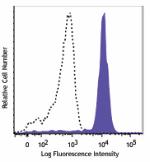
Human peripheral blood monocytes were stained with PE/Cyanin... -
PerCP/Cyanine5.5 anti-human CD14
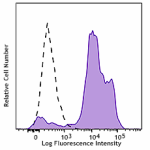
Human peripheral blood monocytes were stained with CD14 (clo... -
Alexa Fluor® 700 anti-human CD14

Human peripheral blood monocytes were stained with Alexa Flu... -
APC anti-human CD14
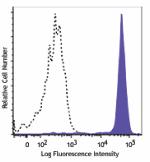
Human peripheral blood monocytes were stained with APC anti-... -
FITC anti-human CD14

Human peripheral blood monocytes were stained with FITC anti... -
APC/Fire™ 750 anti-human CD14
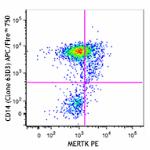
Human peripheral blood monocytes were stained with MERTK PE ... 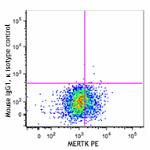
-
Pacific Blue™ anti-human CD14

Human peripheral blood monocytes were stained with Pacific B... -
Brilliant Violet 510™ anti-human CD14
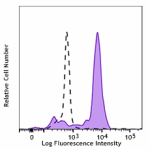
Human peripheral blood monocytes were stained with Brilliant... -
Brilliant Violet 605™ anti-human CD14
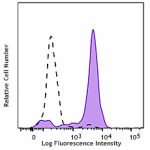
Human peripheral blood monocytes were stained with Brilliant... -
Alexa Fluor® 647 anti-human CD14

Human peripheral blood monocytes were stained with Alexa Flo... -
Alexa Fluor® 488 anti-human CD14
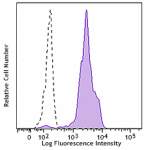
Human peripheral blood monocytes were stained with Alexa Flo... -
TotalSeq™-A0051 anti-human CD14
-
PE/Dazzle™ 594 anti-human CD14

Human peripheral blood monocytes were stained with PE/Dazzle... -
Brilliant Violet 750™ anti-human CD14
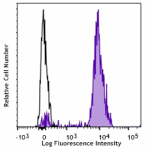
Human peripheral blood monocytes were stained with Brilliant... -
TotalSeq™-C0051 anti-human CD14
-
Brilliant Violet 421™ anti-human CD14
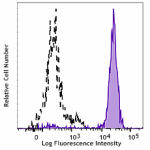
Human peripheral blood monocytes were stained with Brilliant... 
Human peripheral blood monocytes were stained with HLA-DR FI... -
Brilliant Violet 785™ anti-human CD14

Human peripheral blood monocytes were stained with Brilliant... 
Human peripheral blood monocytes were stained with HLA-DR FI... -
Brilliant Violet 711™ anti-human CD14

Human peripheral blood monocytes were stained with HLA-DR FI... 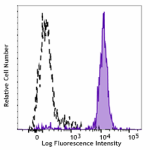
Human peripheral blood monocytes were stained with Brilliant... -
TotalSeq™-B0051 anti-human CD14
-
Spark Blue™ 550 anti-human CD14
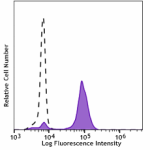
Human peripheral blood monocytes were stained with CD14 (clo... -
Spark NIR™ 685 anti-human CD14
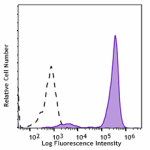
Human peripheral blood monocytes were stained with CD14 (clo... -
PE/Fire™ 640 anti-human CD14

Human peripheral blood monocytes were stained with CD14 (clo... -
APC/Fire™ 810 anti-human CD14
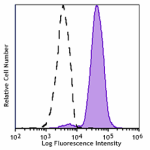
Human peripheral blood monocytes were stained with CD14 (clo... -
PerCP anti-human CD14
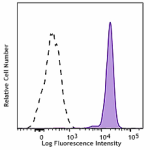
Human peripheral blood monocytes were stained with CD14 (clo... -
PE/Fire™ 700 anti-human CD14

Human peripheral blood monocytes were stained with anti-huma... -
Spark YG™ 581 anti-human CD14

Human peripheral blood monocytes were stained with anti-huma... -
Spark Blue™ 574 anti-human CD14
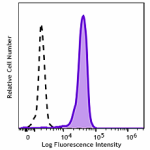
Human peripheral blood monocytes were stained with anti-huma... -
Spark Red™ 718 anti-human CD14 (Flexi-Fluor™)
-
Brilliant Violet 650™ anti-human CD14

Human peripheral blood mononuclear cells were stained with a...
